Speaker
Description
The Micro-Vertex Detector of the CBM experiment at FAIR will be equipped with the full custom CMOS Pixel Sensor called MIMOSIS designed at IPHC, which is also developed for the EU project CREMLINplus and serves as a forerunner for future high precision tracking devices.
Several prototypes and building blocks are developed and tested by IPHC-IKF-GSI collaboration in order to fulfill the requirements such as spatial resolution of ~5 $\mu m$, radiation tolerance to $7\times10^{13}n_{eq} /cm^2$ (1MeV) and 5 Mrad, continuous read-out with 5 $\mu s$ time stamp and $70~MHz/cm^2$ peak counting rate.
In the first full scale prototype (MIMOSIS-1) the digital logic reduces the data flow from up to 20 Gbits/s to 2.56 Gbits/s at the sensor output by aggregating the data.
Front-end circuit was inspired by ALPIDE (CERN) chip, major difference is an introduction of AC coupled diode variant, allowing for increasing bias voltage and improving the radiation tolerance. However, input capacitance also increases, the trade-off between AC and DC coupling will be discussed.
The results of laboratory tests and beam measurements of MIMOSIS-1, showing the resolution, the charge collection efficiency and the detection efficiency will be presented for different variants of pixels.
The performances before and after irradiation will be assessed in order to validate the final sensor prototype (MIMOSIS-2) which is planned to be submitted in 2021/2022.
| Primary experiment | CBM experiment at FAIR |
|---|
